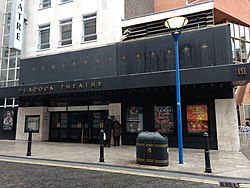
Dame Dorothy Tutin, was an English actress of stage, film and television. For her work in the theatre, she won two Olivier Awards and two Evening Standard Awards for Best Actress. She was made a CBE in 1967 and a Dame (DBE) in 2000.

Cinerama is a widescreen process that originally projected images simultaneously from three synchronized 35mm projectors onto a huge, deeply curved screen, subtending 146-degrees of arc. The trademarked process was marketed by the Cinerama corporation. It was the first of several novel processes introduced during the 1950s when the movie industry was reacting to competition from television. Cinerama was presented to the public as a theatrical event, with reserved seating and printed programs, and audience members often dressed in their best attire for the evening.
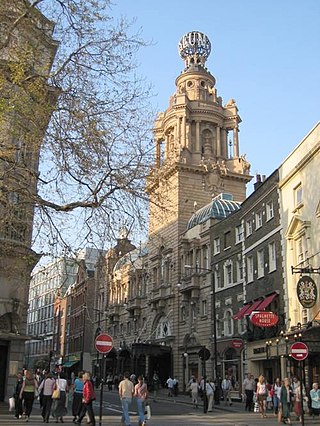
English National Opera (ENO) is a British opera company based in London, resident at the London Coliseum in St Martin's Lane. It is one of the two principal opera companies in London, along with The Royal Opera. ENO's productions are sung in English.

Sadler's Wells Theatre is a London performing arts venue, located in Rosebery Avenue, Islington. The present-day theatre is the sixth on the site. Sadler's Wells grew out of a late 17th-century pleasure garden and was opened as a theatre building in the 1680s.
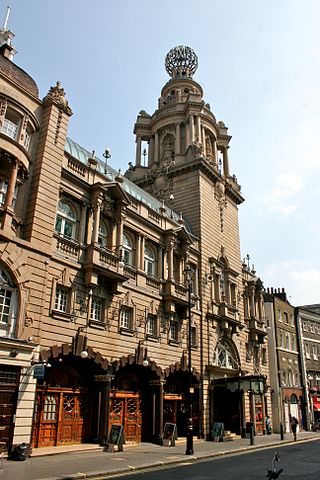
The London Coliseum is a theatre in St Martin's Lane, Westminster, built as one of London's largest and most luxurious "family" variety theatres. Opened on 24 December 1904 as the London Coliseum Theatre of Varieties, it was designed by the architect Frank Matcham for the impresario Oswald Stoll. Their ambition was to build the largest and finest music hall, described as the "people's palace of entertainment" of its age.

The Opera Comique was a 19th-century theatre constructed in Westminster, London, located between Wych Street, Holywell Street and the Strand. It opened in 1870 and was demolished in 1902, to make way for the construction of the Aldwych and Kingsway.

West End theatre is mainstream professional theatre staged in the large theatres in and near the West End of London. Along with New York City's Broadway theatre, West End theatre is usually considered to represent the highest level of commercial theatre in the English-speaking world. Seeing a West End show is a common tourist activity in London. Famous screen actors, British and international alike, frequently appear on the London stage.

The Prince Edward Theatre is a West End theatre situated on Old Compton Street, just north of Leicester Square, in the City of Westminster, London.

Buxton Opera House is in The Square, Buxton, Derbyshire, England. It is a 902-seat opera house that hosts the annual Buxton Festival and the International Gilbert and Sullivan Festival, among others, as well as pantomime at Christmas, musicals and other entertainments year-round. Hosting live performances until 1927, the theatre then was used mostly as a cinema until 1976. In 1979, it was refurbished and reopened as a venue for live performance.

The Bristol Hippodrome is a theatre located in The Centre, Bristol, England, United Kingdom with seating on three levels giving a capacity of 1,951. It frequently features shows from London's West End when they tour the UK, as well as regular visits by Welsh National Opera and an annual pantomime.

The Lyceum Theatre is a West End theatre located in the City of Westminster, on Wellington Street, just off the Strand in central London. It has a seating capacity of 2,100. The origins of the theatre date to 1765. Managed by Samuel Arnold, from 1794 to 1809 the building hosted a variety of entertainments including a circus produced by Philip Astley, a chapel, and the first London exhibition of waxworks by Madame Tussauds. From 1816 to 1830, it served as The English Opera House. After a fire, the house was rebuilt and reopened on 14 July 1834 to a design by Samuel Beazley. The building is unique in that it has a balcony overhanging the dress circle. It was built by the partnership of Peto & Grissell. The theatre then played opera, adaptations of Charles Dickens novels and James Planché's "fairy extravaganzas", among other works.

The Royalty Theatre was a small London theatre situated at 73 Dean Street, Soho. Established by the actress Frances Maria Kelly in 1840, it opened as Miss Kelly's Theatre and Dramatic School and finally closed to the public in 1938. The architect was Samuel Beazley. The theatre's opening was ill-fated, and it was little used for a decade. It changed its name twice and was used by an opera company, amateur drama companies and for French pieces.

Dame Gillian Barbara Lynne was an English ballerina, dancer, choreographer, actress, and theatre-television director, noted for her theatre choreography associated with two of the longest-running shows in Broadway history, Cats and The Phantom of the Opera. At age 87, she was made a DBE in the 2014 New Year Honours List.
William Robert 'Bertie' Crewe was one of the leading English theatre architects in the boom of 1885 to 1915.
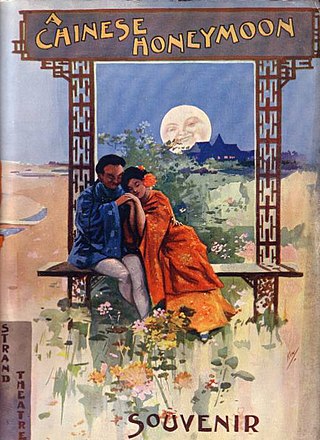
The Royal Strand Theatre was located in the Strand in the City of Westminster. The theatre was built on the site of a panorama in 1832, and in 1882 was rebuilt by the prolific theatre architect Charles J. Phipps. It was demolished in 1905 to make way for Aldwych tube station.
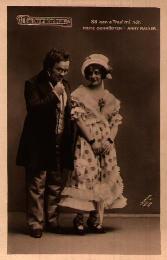
Das Dreimäderlhaus, adapted into English-language versions as Blossom Time and Lilac Time, is a Viennese pastiche operetta with music by Franz Schubert, rearranged by Heinrich Berté (1857–1924), and a libretto by Alfred Maria Willner and Heinz Reichert. The work gives a fictionalized account of Schubert's romantic life, and the story was adapted from the 1912 novel Schwammerl by Rudolf Hans Bartsch (1873–1952). Originally the score was mostly Berté, with just one piece of Schubert's, but the producers required Berté to discard his score and create a pasticcio of Schubert music.

The Tyne Theatre and Opera House is a theatre in Newcastle upon Tyne, England. It is a Grade I listed building, rated "in the top 4% of listed buildings" by English Heritage and is afforded a three star rating by the Theatres Trust, "a very fine theatre of the highest theatrical and architectural quality". It opened in 1867 as the Tyne Theatre and Opera House, designed by the Newcastle upon Tyne architecture practice of William Parnell. The backstage area was damaged by fire in 1985, with subsequent rebuilding restoring the Victorian stage machinery.
The Theatre Royal, Hanley was a theatre in Stoke-on-Trent, England with a long history.
Herbert Griffiths was a British cinema organist, conductor, composer and arranger of concert, theatre and film music.
